Paul D. Miller, aka DJ Spooky That Subliminal Kid: Rhythm Science (2004)
Filed under pamphlet | Tags: · code, language, memory, music, myth, networks, remix, sound recording, technology

“Once you get into the flow of things, you’re always haunted by the way that things could have turned out. This outcome, that conclusion. You get my drift. The uncertainty is what holds the story together, and that’s what I’m going to talk about.”
—Rhythm Science
The conceptual artist Paul Miller, also known as Dj Spooky that Subliminal Kid, delivers a manifesto for rhythm science—the creation of art from the flow of patterns in sound and culture, “the changing same.” Taking the Dj’s mix as template, he describes how the artist, navigating the innumerable ways to arrange the mix of cultural ideas and objects that bombard us, uses technology and art to create something new and expressive and endlessly variable. Technology provides the method and model; information on the web, like the elements of a mix, doesn’t stay in one place. And technology is the medium, bridging the artist’s consciousness and the outside world.
Miller constructed his Dj Spooky persona (“spooky” from the eerie sounds of hip-hop, techno, ambient, and the other music that he plays) as a conceptual art project, but then came to see it as the opportunity for “coding a generative syntax for new languages of creativity.” For example: “Start with the inspiration of George Herriman’s Krazy Kat comic strip. Make a track invoking his absurd landscapes… What do tons and tons of air pressure moving in the atmosphere sound like? Make music that acts a metaphor for that kind of immersion or density.” Or, for an online “remix” of two works by Marcel Duchamp: “I took a lot of his material written on music and flipped it into a DJ mix of his visual material—with him rhyming!”
Tracing the genealogy of rhythm science, Miller cites sources and influences as varied as Ralph Waldo Emerson (“all minds quote”), Grandmaster Flash, W. E. B Dubois, James Joyce, and Eminem. “The story unfolds while the fragments coalesce,” he writes.
Miller’s textual provocations are designed for maximum visual and tactile seduction by the international studio COMA (Cornelia Blatter and Marcel Hermans). They sustain the book’s motifs of recontextualizing and relayering, texts and images bleed through from page to page, creating what amount to 2.5 dimensional vectors. From its remarkable velvet flesh cover, to the die cut hole through the center of the book, which reveals the colored nub holding in place the included audio CD, Rhythm Science: Excerpts and Allegories from the Sub Rosa Archives, this pamphlet truly lives up to Editorial Director Peter Lunenfeld’s claim that the Mediawork Pamphlets are “theoretical fetish objects . . . ‘zines for grown-ups.”
Publisher MIT Press, 2004
A Mediawork pamphlet
ISBN 026263287X, 9780262632874
128 pages
Hypnotext (Rhythm Science’s webtake by Peter Halley)
publisher
publisher
google books
PDF (no OCR; updated on 2013-1-23)
Comment (0)The Situated Technologies Pamphlets 1-4 (2007-2009)
Filed under pamphlet | Tags: · architecture, city, interactive design, labour, life, situated technologies, ubiquitous computing, urban computing, urbanism
The Situated Technologies Pamphlet Series extends a discourse initiated in the summer of 2006 by a three-month-long discussion on the Institute for Distributed Creativity (iDC) mailing list, which culminated in the Architecture and Situated Technologies symposium at the Urban Center and Eyebeam in New York that October, co-produced by the Center for Virtual Architecture, the Architectural League of New York, and the iDC.
The series aims to explore the implications of ubiquitous computing for architecture and urbanism: How are our experience of the city and the choices we make in it affected by mobile communications, pervasive media, ambient informatics, and other “situated” technologies? How will the ability to design increasingly responsive environments alter the ways we conceive of space? What do architects need to know about urban computing, and what do technologists need to know about cities? How are these issues themselves situated within larger social, cultural, environmental, and political concerns?
Published three times a year over three years, the series is structured as a succession of nine “conversations” between researchers, writers and other practitioners of architecture, art, philosophy of technology, comparative media study, performance studies, and engineering. It takes on the urgent and ambitious task of exploring the implications of emerging technologies and their intersection with daily life.
Such a rapid insertion of texts into discourse is rarely witnessed within the context of traditional US publishing, which often requires years to go from manuscript to distribution of the printed book. We feel strongly that the discussion about Situated Technologies cannot be postponed that long. At the same time, we acknowledge that the subject is itself a moving target, as these technologies continue to evolve rapidly. Given these considerations, we’ve opted to publish the series using Print On Demand (POD) technology. Widely used but still little known, this publishing technique allows fast turnaround of books that can be ordered through online bookstores and are indistinguishable from many books in your bookshelf.
Series Editors: Omar Khan, Trebor Scholz, Mark Shepard
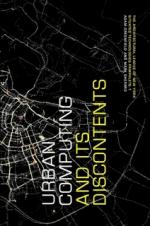
Situated Technologies Pamphlet 1: Urban Computing and its Discontents
by Adam Greenfield and Mark Shepard
Fall 2007
A conversation between the authors providing an overview of the key issues, historical precedents, and contemporary approaches to designing situated technologies and inhabiting cities populated by them.
Download a PDF here or get a printed copy from Lulu.com.
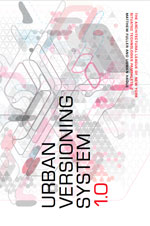
Situated Technologies Pamphlet 2: Urban Versioning System 1.0
by Matthew Fuller and Usman Haque
Spring 2008
What lessons can architecture learn from software development, and more specifically, from the Free, Libre, and Open Source Software (FLOSS) movement? Written in the form of a quasi-license, Urban Versioning System 1.0 posits seven constraints that, if followed, will contribute to an open source urbanism that radically challenges the conventional ways in which cities are constructed.
Download a PDF here or get a printed copy from Lulu.com.
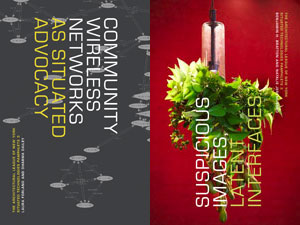
Situated Technologies Pamphlet 3: Situated Advocacy
Summer 2008
A special double issue featuring the essays:
Community Wireless Networks as Situated Advocacy
– Laura Forlano and Dharma Dailey
Suspicious Images, Latent Interfaces
– Benjamin Bratton and Natalie Jeremijenko
Advocacy is the act of arguing on behalf of a particular cause, idea or person, and addresses issues including self-advocacy, environmental protection, the rights of women, youth and minorities, social justice, the re-structured digital divide and political reform.
Situated Technologies Pamphlets 3: Situated Advocacy considers how situated technologies have been—or might be—mobilized toward changing and/or influencing social or political policies, practices, and beliefs. What new forms of advocacy are enabled by contemporary location-based or context-aware media and information systems? How might they lend tactical support to the process of managing information flows and disseminating strategic knowledge that influences individual behavior or opinion, corporate conduct or public policy and law?
Download a PDF here or get a printed copy from Lulu.com.
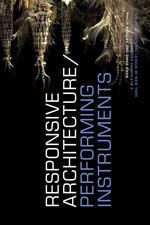
Situated Technologies Pamphlet 4: Responsive Architecture / Performing Instruments
by Philip Beesley and Omar Khan
Spring 2009
A new generation of architecture that responds to building occupants and environmental factors has embraced distributed technical systems as a means and end for developing more mutually enriching relationships between people, the space they inhabit, and the environment. This pamphlet discusses key qualities of “responsive” architecture as a performing instrument that is both mutable and contestable.
Download a PDF here or get a printed copy from Lulu.com.
Comment (0)Guy Debord: Society of the Spectacle (1967–) [FR, EN, NL, GR, DE, IT, ES, TR, BR-PT, RO, SR, HU, LT, PL, CZ]
Filed under pamphlet | Tags: · activism, capitalism, consumerism, everyday, life, mass media, situationists, spectacle, spectatorship
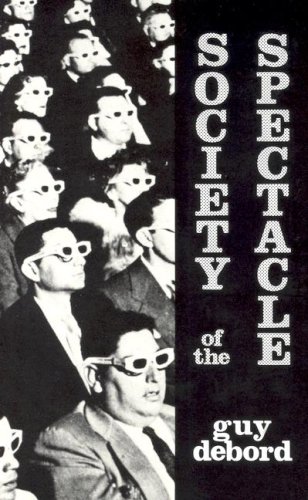
“The Das Kapital of the 20th century. An essential text, and the main theoretical work of the situationists. Few works of political and cultural theory have been as enduringly provocative. From its publication amid the social upheavals of the 1960’s up to the present, the volatile theses of this book have decisively transformed debates on the shape of modernity, capitalism, and everyday life in the late 20th century.
Self-proclaimed leader of the Situationist International, Guy Debord was certainly responsible for the longevity and high profile of Situationist ideas, although the equation of the SI with Guy Debord would be misleading. Brilliant but autocratic, Debord helped both unify situationist praxis and destroy its expansion into areas not explicitly in line with his own ideas. His text The Society of the Spectacle remains today one of the great theoretical works on modern-day capital, cultural imperialism, and the role of mediation in social relationships.”
Publisher Buchet-Chastel, Paris, Nov 1967
175 pages
Wikipedia (EN)
La Société du Spectacle (French, 1967; HTML)
Society of the Spectacle (English, trans. Fredy Perlman and Jon Supak, 1970; HTML)
De spektakelmaatschappij (Dutch, trans. Jaap Kloosterman and René van de Kraats, 1976/2001, updated on 2019-11-8)
Η Κοινωνία του Θεάματος (Greek, trans. Panos Tsachageas and Nikos B. Alexiou, 1977, updated on 2019-11-8)
Die Gesellschaft des Spektakels (German, trans. Jean-Jacques Raspaud, 1978)
La societa dello spettacolo (Italian, trans. Paolo Salvadori, 1979)
Society of the Spectacle (English, trans. Donald Nicholson-Smith, 1994; HTML)
La sociedad del espectacul (Spanish, trans. Rodrigo Vicuña Navarro, 1995)
Gösteri toplumu ve yorumlar (Turkish, trans. Ayşen Ekmekçi and Okşan Taşkent, 1996, added on 2012-12-27)
A sociedade do espetaculo (BR-Portuguese, trans. Estela dos Santos Abreu, 1997)
Societatea spectacolului. Comentarii la societatea spectacolului (Romanian, trans. Ciprian Mihali and Radu Stoenescu, 1998)
La sociedad del espectacul (Spanish, trans. José Luis Pardo, 1999)
Η Κοινωνία του Θεάματος (Greek, trans. Sylvia, 2000, added on 2019-11-8)
Society of the Spectacle (English, trans. Ken Knabb, 2005; new ed., annotated, 2014, HTML, PDF, EPUB, added on 2019-11-12)
Društvo spektakla (Serbian, trans. Aleksa Golijanin, 2003/2012; HTML, added on 2017-7-27)
Spektákulum társadalma (Hungarian, trans. Miklós Erhardt, 2006, updated on 2019-11-8)
Spektaklio visuomenė (Lithuanian, 2006, added on 2019-11-8)
Społeczeństwo spektaklu oraz Rozważania o społeczeństwie spektaklu (Polish, trans. Mateusz Kwaterko, 2006, updated on 2019-11-8)
Společnost spektáklu (Czech, 2007, updated on 2019-7-21)
La sociedad del espectacul (Spanish, trans. Colectivo Maldeojo, 2009)
Societatea spectacolului (Romanian, trans. Cristina Săvoiu, 2011, added on 2015-11-29)

